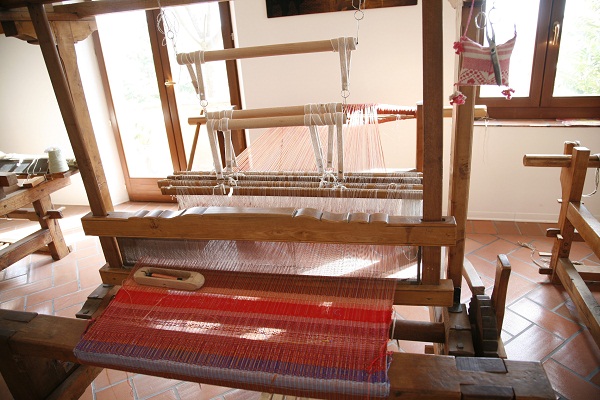
The extraction of the textile fiber and the subsequent processing and weaving of hemp are part of lengthy processes that require not inconsiderable gifts of patience and skill, as well as a genuinely felt passion towards a cultural heritage that one wants to help preserve.

It naturally goes from planting and growing the plants to harvesting the canes, which can reach a maximum length of four meters.
The reeds must then be placed first to dry, then to macerate, to allow the separation of the inner woody part from the outer part, from which the textile fiber will then be made.
The raw material obtained by this process is further placed to dry.
At this point it is ready to be subjected to the operation of threshing with the “macigna,” a wooden tool used to defibrate the hemp, making it thinner and thinner.
The next stage makes use of the “ciavola,” which further defibers the hemp.
At this point combing is the last of the preparatory steps for the fiber, before spinning at the spinning wheel and spindle with the help of saliva. Passing the fibers over the combs, arranged in order of tooth size and width, the hemp is then roughened and prepared for spinning, which begins with winding the threads around the “distaff.”
Finally, we come to thewarping stage, a rather complex ending to this long preparatory phase that leads to the preparation of the loom for the beginning of weaving.
If you liked it you might also be interested in: Traditional loom preparation and weaving



